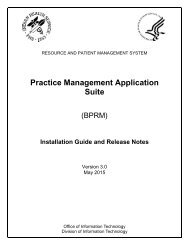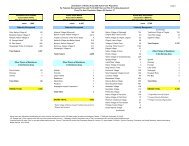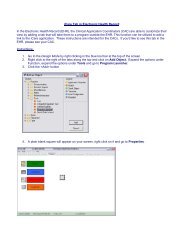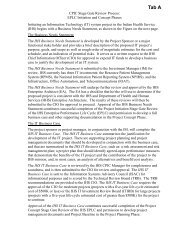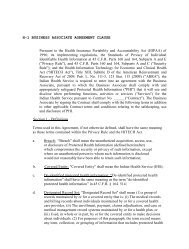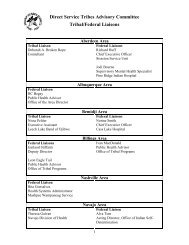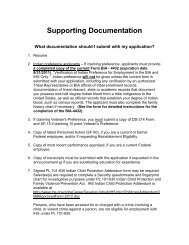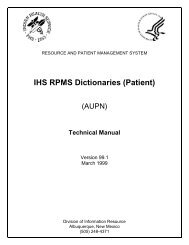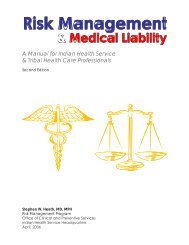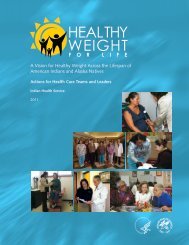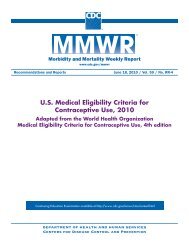Public Health Nursing Documentation Guidelines - Indian Health ...
Public Health Nursing Documentation Guidelines - Indian Health ...
Public Health Nursing Documentation Guidelines - Indian Health ...
Create successful ePaper yourself
Turn your PDF publications into a flip-book with our unique Google optimized e-Paper software.
<strong>Documentation</strong> and Coding <strong>Guidelines</strong> for <strong>Public</strong> <strong>Health</strong> Nurses<br />
or reason for visit; relevant history and examination of findings; clinical impression<br />
or diagnosis; plan of care; identification of appropriate risk factors; date; and legible<br />
identification of the health care professional.<br />
The Manual references time frames: “Each entry in the record is completed (including<br />
authentication) within the time frames delineated by the facility’s medical staff<br />
bylaws, rules, and regulations.” <strong>Public</strong> health nurses need to be knowledgeable of,<br />
and adhere to, their local facilities’ policies regarding time frames.<br />
<strong>Documentation</strong> has to occur in a timely fashion, usually at the end of the workday.<br />
In some cases, public health nurses deliver service in the field and do not return to<br />
the office until the next business day; in these cases, documentation must happen<br />
within 24 business hours of the service delivered. Delaying documentation leads to<br />
incomplete or inaccurate information.<br />
In addition to incomplete reporting, delayed documentation can create a gap in service<br />
and possible harm to a patient. For example, let’s say a patient receives service<br />
on Monday from a public health nurse who does not document the service on the day<br />
it occurred. Then, on Tuesday, an emergency happens and a different provider gives<br />
service to the same patient without knowing what was provided on Monday because<br />
Monday’s service was not recorded yet in the patient’s record. This delayed documentation<br />
creates a health risk for the patient and a potential legal liability for the<br />
<strong>Indian</strong> <strong>Health</strong> Service if the patient experiences a negative outcome. Another negative<br />
scenario would be that medications or tests ordered for a patient are not delivered<br />
or performed in a timely manner because documentation was not made on the<br />
day of service. This would also create a potential health risk and legal liability.<br />
In regards to billing for PHN services, timeliness of documentation is crucial to support<br />
the processing of collection and to seek immediate reimbursement payments.<br />
<strong>Documentation</strong> must be accurate to avoid inappropriate billing practices and the potential<br />
for negative financial legal consequences, such as a facility having to repay<br />
fees. Therefore, every effort must be made to ensure that PHN documentation is accurate<br />
and timely.<br />
Remember: if a service was not documented, then the overwhelming<br />
presumption is that the service was not provided.<br />
The American Nurses Association’s <strong>Nursing</strong>: Scope and Standards of Practice provides<br />
nurses, regardless of specialty, with a scientific process in providing nursing<br />
care. Using the nursing process as a tool in documenting patient care aligns with the<br />
<strong>Indian</strong> <strong>Health</strong> Service’s <strong>Health</strong> Information Management guidelines and is a best<br />
practice for managing documentation risk.<br />
Page 1-4



